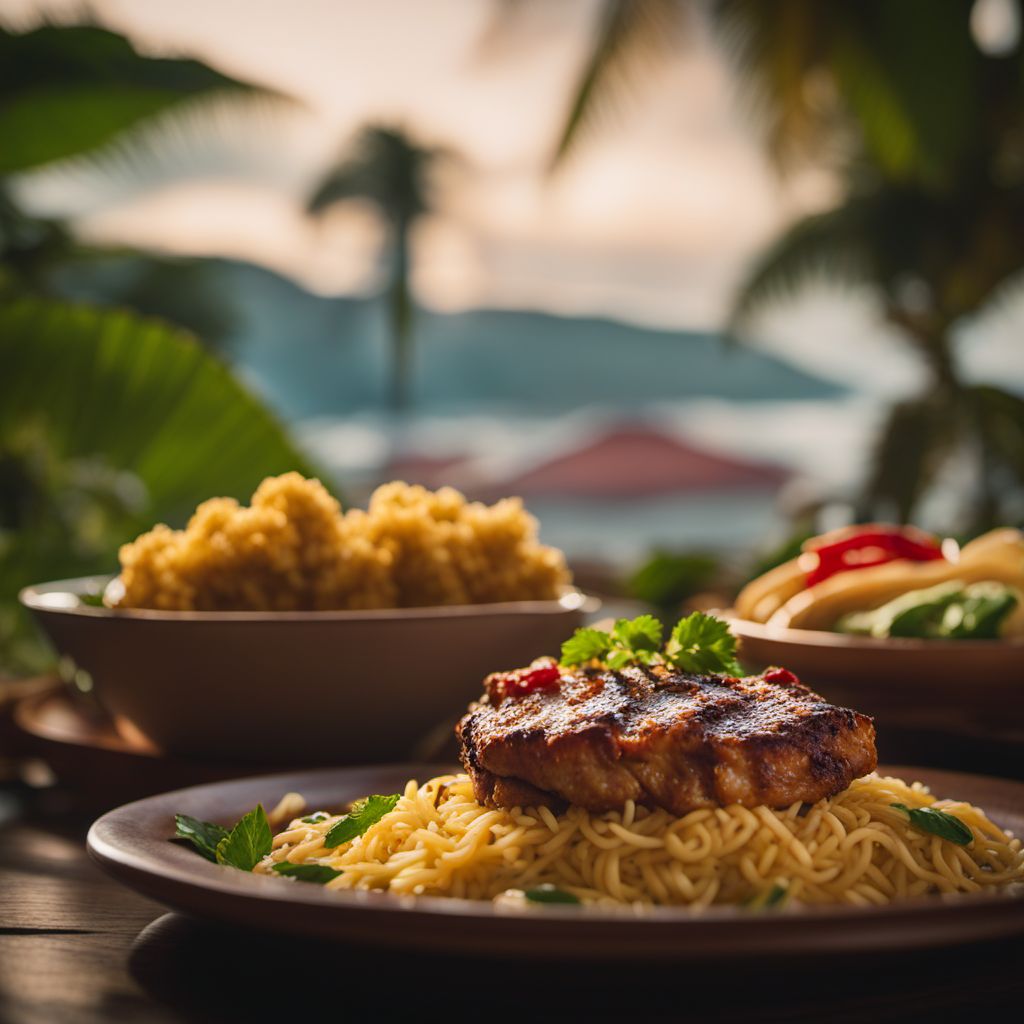
Cuisine
Panamanian cuisine
Panamanian cuisine is heavily influenced by its location and history. The country's location on the isthmus of Central America has made it a crossroads of cultures, resulting in a unique blend of flavors and ingredients. Seafood is a staple of Panamanian cuisine, with dishes like ceviche and fried fish being popular. The cuisine also makes use of tropical fruits and vegetables like plantains, yucca, and mangoes. Panamanian cuisine is known for its use of spices and herbs like cilantro, cumin, and achiote.
Typical ingredients
Seafood (fish, shrimp, lobster, crab), Plantains, Yucca, Corn, Beans, Rice, Chicken, Pork, Beef, Mangoes, Papayas, Pineapples, Cilantro, Cumin, Achiote, Garlic, Onions
Presentation and garnishing
Panamanian dishes are often served with rice and beans, and are garnished with fresh herbs and lime wedges. Seafood dishes are often served with coconut rice and fried plantains. Ceviche is a popular appetizer, and is typically served with tortilla chips or crackers.
Panama is home to over 1,000 species of birds, making it a popular destination for birdwatchers. The country is also known for its coffee, which is grown in the highlands and has a rich, full-bodied flavor.
More cuisines from this region...
Costa Rican cuisine, Salvadoran cuisine, Guatemalan cuisine, Nicaraguan cuisine, Belizean cuisine, Honduran cuisine
History
Panamanian cuisine has a long history dating back to pre-Columbian times. The indigenous people of Panama relied heavily on seafood and agriculture, and their diet included staples like corn, beans, and squash. With the arrival of the Spanish in the 16th century, new ingredients like rice, wheat, and livestock were introduced. African slaves brought to Panama also contributed to the cuisine, bringing with them their own culinary traditions. Today, Panamanian cuisine continues to evolve and adapt to new influences.
Cultural significance
Panamanian cuisine is an important part of the country's cultural identity. It is often served at festivals and celebrations, and is a source of national pride. The cuisine also reflects the country's diverse population and history.
Health benefits and considerations
Panamanian cuisine is generally healthy, with an emphasis on fresh ingredients and seafood. However, some dishes can be high in calories and fat, particularly those that are fried or served with rich sauces. It is important to practice moderation and balance when enjoying Panamanian cuisine.
Panamanian cuisine dishes Browse all »

Arroz con apio
Celery Rice
Arroz con apio is a traditional Colombian dish that is made with rice and celery. It is a simple and delicious dish that is perfect for any occasion.
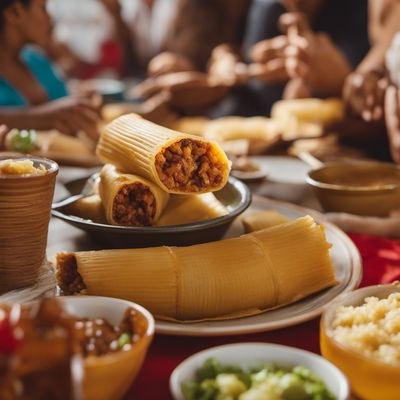
Tamal Panameño
Panamanian Tamale
Tamal Panameño is a traditional Panamanian dish that is made with corn masa dough and filled with chicken, vegetables, and spices.
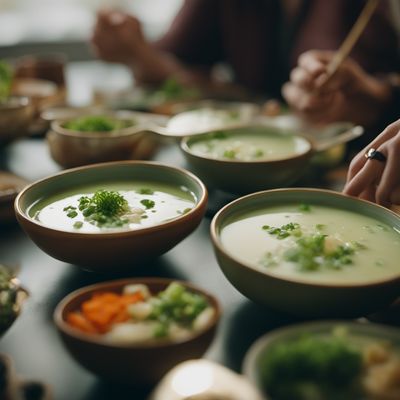
Sopa de cebollin
Scallion soup
Sopa de cebollin, also known as scallion soup, is a simple and flavorful soup that is perfect for a light lunch or dinner. The soup is made with scallions, potatoes, and a...

Sopa de gallina india
Indian hen soup
Sopa de gallina india is a traditional Peruvian soup made with hen, vegetables, and spices. It is a hearty and flavorful dish that is perfect for cold weather.
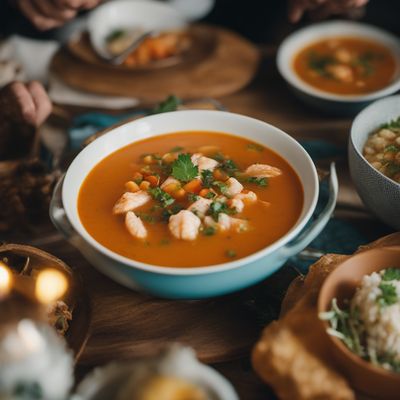
Dzik de pescado
Fish Soup
Dzik de pescado is a traditional Mexican fish dish that is popular in the Yucatan region. It is a flavorful and spicy dish that is perfect for seafood lovers.

Sopa de patacón
Green plantain soup
Sopa de patacón is a traditional soup from Colombia made with green plantains and a variety of vegetables and meats.

Iguana Stew
Iguana stew
Iguana stew is a traditional dish from the Caribbean, particularly in Cuba and Puerto Rico. It is a hearty and flavorful stew made with iguana meat, vegetables, and spices.

Arroz de lisa
Mullet rice
Arroz de lisa is a traditional Panamanian dish made with rice and a type of fish called lisa. It is a flavorful and aromatic dish that is perfect for sharing with family and friends.
Panamanian cuisine recipes Browse all »
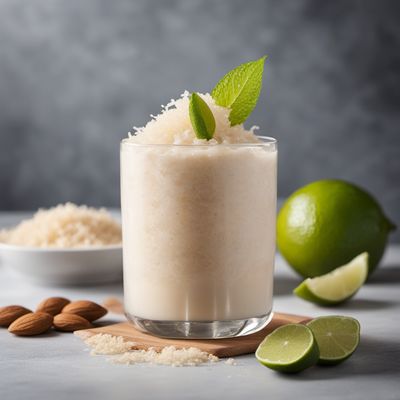
Panamanian Almond Granita
Tropical Delight: Panamanian Almond Granita

Panamanian Alajú
Panamanian Delight: A Sweet and Nutty Alajú Recipe
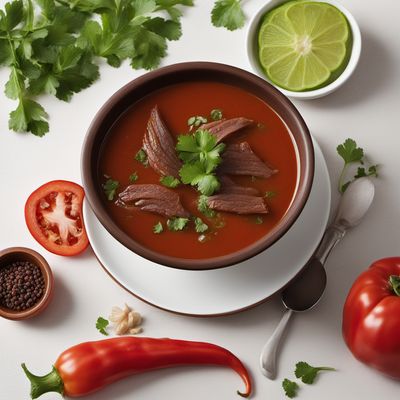
Panamanian Beef Tail Soup
Savory Delight: Panamanian Beef Tail Soup
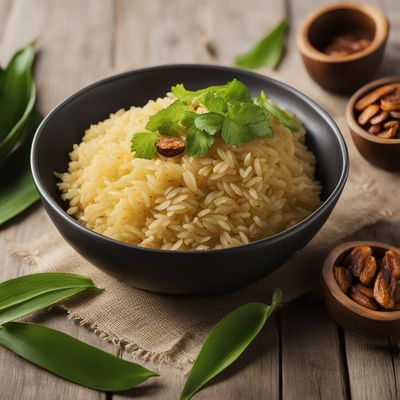
Panamanian Coconut Rice with Plantains
Tropical Delight: Panamanian Coconut Rice with Sweet Plantains
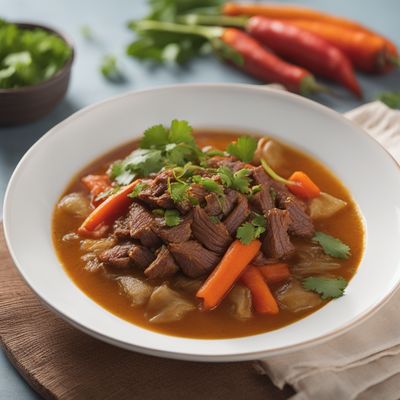
Sopa de Patacón
Plantain Soup Delight
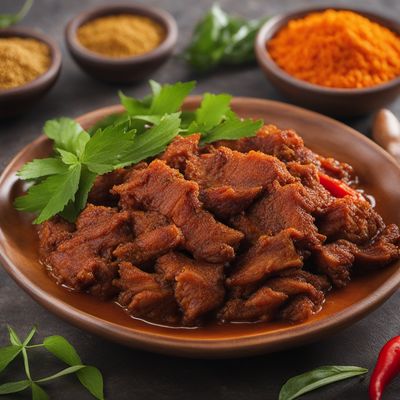
Panamanian Hog Fry
Savory Panamanian Pork Delight
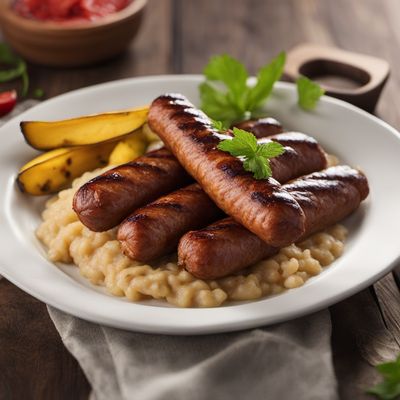
Panamanian-style Grilled Sausage with Plantain Mash
Savory Grilled Sausage Delight with Creamy Plantain Mash
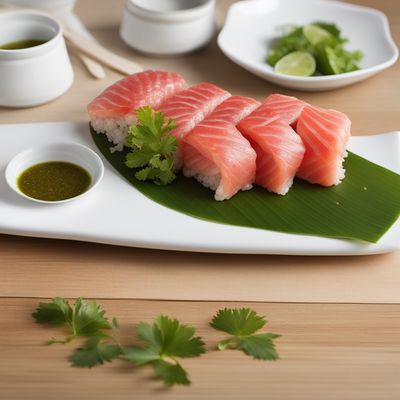
Panamanian-style Battera Sushi
Tropical Fusion: Panamanian-style Battera Sushi with a Twist

Panamanian Celery Rice
Savory Delight: Panamanian Celery Rice - A Flavorful Twist to Traditional Rice
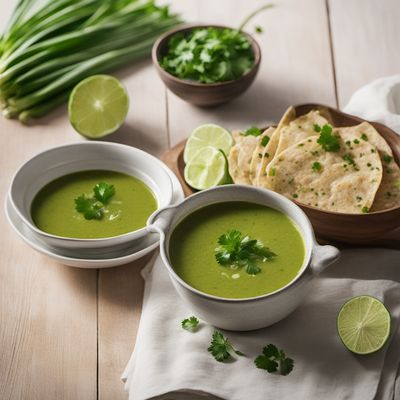
Panamanian Green Onion Soup
Savory Delight: Panamanian Green Onion Soup
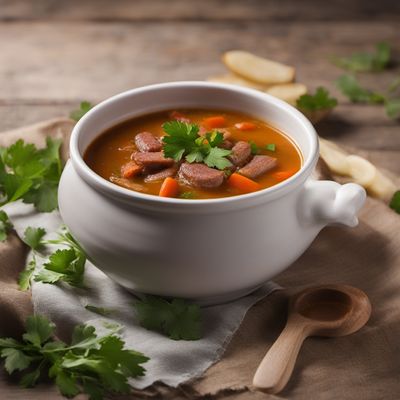
Panamanian Sausage Soup
Savory Delight: Panamanian Sausage Soup

Panamanian Posmodula with a Tropical Twist
Tropical Fusion: Panamanian Posmodula with a Burst of Flavors